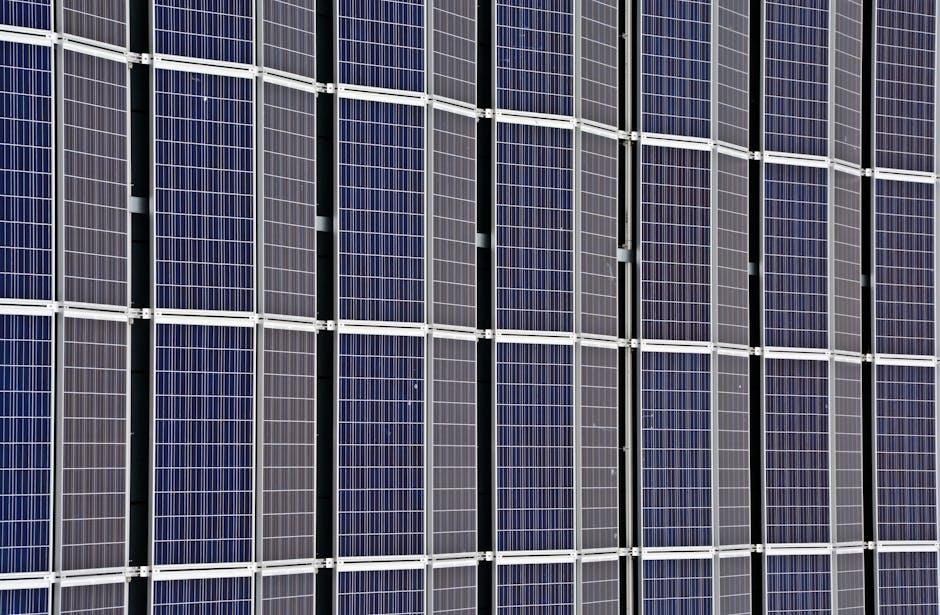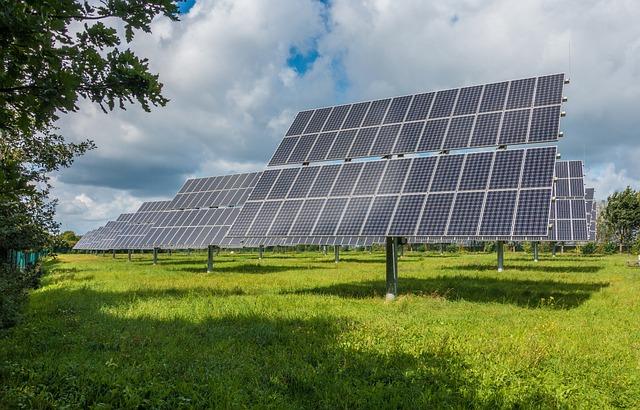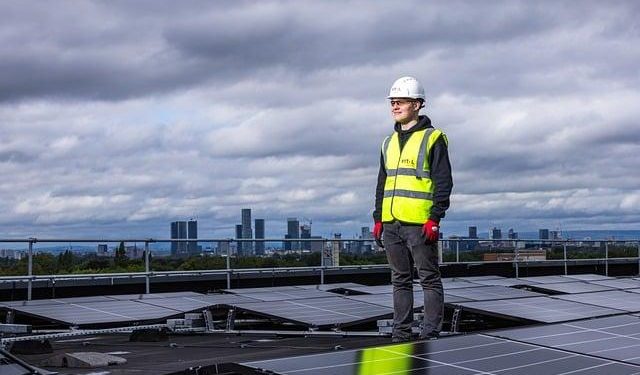In the bustling heart of our urban landscapes, where skyscrapers pierce the sky and concrete jungles stretch as far as the eye can see, a quiet revolution is underway. Solar panels, once the domain of rural expanses and remote rooftops, are now casting their gleaming shadows over the vibrant tapestry of city life. As commercial spaces in urban areas increasingly embrace this green technology, questions naturally arise: Are solar panels truly safe for these densely populated environments? This exploration delves into the intersection of innovation and urban safety, examining the promises and potential pitfalls of integrating solar energy into the commercial fabric of our cities. Join us as we unravel the complexities of harnessing sunlight in the shadows of skyscrapers, balancing progress with precaution in our ever-evolving urban ecosystems.
Assessing Structural Integrity and Load-Bearing Capacity
Ensuring the safety of solar panel installations in urban commercial spaces requires a meticulous evaluation of the building’s structural capacity. The process begins with a comprehensive assessment of the existing framework to determine its ability to accommodate additional weight. Key considerations include the age and material of the building, the condition of the roofing system, and any previous renovations or structural modifications. It’s essential to collaborate with structural engineers who can perform load calculations and identify any necessary reinforcements.
- Material Composition: Assess whether the current materials can support added weight.
- Age of the Building: Older buildings may require more extensive evaluations.
- Roofing Condition: Examine for wear and tear that might compromise installation.
- Previous Modifications: Review past changes that could affect load-bearing capacity.

Navigating Fire Safety and Electrical Risks
In the context of urban commercial spaces, solar panels are generally safe when installed and maintained correctly. However, there are specific fire safety and electrical risks that businesses should be aware of. Proper installation is crucial; engaging certified professionals ensures that panels are mounted securely, wiring is correctly configured, and components are compatible with existing electrical systems. Regular maintenance is equally important to mitigate risks such as faulty connections or damaged panels, which could potentially lead to electrical faults or fires.
To further enhance safety, consider the following practices:
- Implement routine inspections to identify and rectify potential issues early.
- Ensure that the solar system is integrated with the building’s existing fire safety measures.
- Choose panels and inverters that meet industry safety standards and have undergone rigorous testing.
- Train staff on emergency procedures specific to solar panel-related incidents.
By prioritizing these steps, urban commercial spaces can harness solar energy efficiently while minimizing associated risks.

Mitigating Glare and Aesthetic Concerns
One of the common concerns regarding solar panels in urban commercial spaces is the potential for glare, which can be distracting or even hazardous in bustling city environments. Modern solar technology has addressed this issue through the use of anti-reflective coatings and advanced glass materials that significantly reduce reflectivity. These innovations ensure that solar panels absorb more sunlight rather than reflecting it, thus minimizing glare and enhancing energy efficiency.
From an aesthetic standpoint, solar panels have evolved beyond the traditional bulky designs. Many manufacturers now offer sleek, low-profile options that blend seamlessly with contemporary architecture. Aesthetic customization is becoming a key feature, allowing for:
- Integration with existing building facades
- Color and texture matching to complement urban landscapes
- Innovative designs that enhance rather than detract from the building’s appearance
By incorporating these elements, solar panels can transform into an architectural asset rather than a visual intrusion, balancing functionality with form in urban commercial settings.

Optimizing Energy Efficiency and Return on Investment
Integrating solar panels into urban commercial spaces is not just about going green—it’s about maximizing energy efficiency while ensuring a robust return on investment (ROI). Urban commercial buildings often face unique challenges such as limited roof space, shading from neighboring structures, and regulatory constraints. However, innovative design and technology have transformed these obstacles into opportunities. By utilizing high-efficiency photovoltaic panels and smart energy management systems, businesses can significantly reduce their energy costs and dependency on the grid. This shift not only supports environmental sustainability but also enhances a company’s financial health through reduced utility bills and potential tax incentives.
For those looking to optimize their investment, consider the following strategies:
- Customizable Solutions: Tailor solar installations to fit the specific architecture and energy needs of the building, ensuring maximum exposure and efficiency.
- Energy Storage Systems: Incorporate battery storage solutions to store excess energy, providing power during peak demand times and further reducing costs.
- Performance Monitoring: Use advanced monitoring systems to track energy production and consumption in real-time, enabling prompt adjustments for optimal performance.
- Financial Incentives: Leverage government grants, tax credits, and other financial incentives designed to offset installation costs and accelerate ROI.
By focusing on these strategies, urban commercial spaces can transform solar investments into powerful tools for both economic and environmental gain.
To Conclude
In the ever-evolving landscape of urban development, the question of integrating solar panels into commercial spaces emerges as both a challenge and an opportunity. As we stand at the intersection of innovation and sustainability, it becomes clear that the journey towards harnessing solar energy is not just about technological advancement but also about reimagining the urban skyline.
From rooftop installations to innovative solar facades, the safety and efficacy of solar panels in commercial spaces hinge on informed decisions, meticulous planning, and a commitment to future-proofing our cities. While concerns around safety, aesthetics, and efficiency persist, they are met with the promise of technological advancements and regulatory frameworks designed to address them.
As urban centers continue to expand and the demand for clean energy grows, the conversation around solar panels in commercial spaces will undoubtedly evolve. It invites stakeholders—from architects to city planners, business owners to environmentalists—to collaborate in shaping a future where our cities are not only smart but also sustainable.
In this dialogue between the sun and the city, we find not just a narrative of safety and sustainability, but a testament to human ingenuity and the relentless pursuit of a greener tomorrow.

































